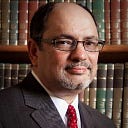Member-only story
History of Easter: The Sanhedrin — Who was this Council?

The Greek word Συνέδριον, sunedrion, means literally “sitting together” and is usually translated as “council.” It is referred to in the New Testament alternately as “the Great Law-Court,” “the Court of Seventy-One,” and “the rulers and elders and scribes.”
It was the supreme theocratic court of the Jews. It reflected the local autonomy that first, the Greek and later the Roman powers granted the Jewish nation during their successive sovereignty over the Land of Israel.
Origin of the Sanhedrin
Its origin can be traced back as far as 200 B.C. during the “Intertestamental Period,” meaning that period extending about 400 years after the close of the Old Testament to the beginning of the New Testament writings. We hear about it during the Hasmonean period, following the Maccabean Revolt — which you can read more about in the History of Chanukah — and there are references to it in the Mishnah section of the Talmud. But there is no reference to this body in the original Old Testament. The council had about 70 members plus the ruling high priest. Three professional groups composed the council:
- High priests — the acting high priest and former high priests, and members of the chief-priestly families
- Elders — tribal and family heads of the…
